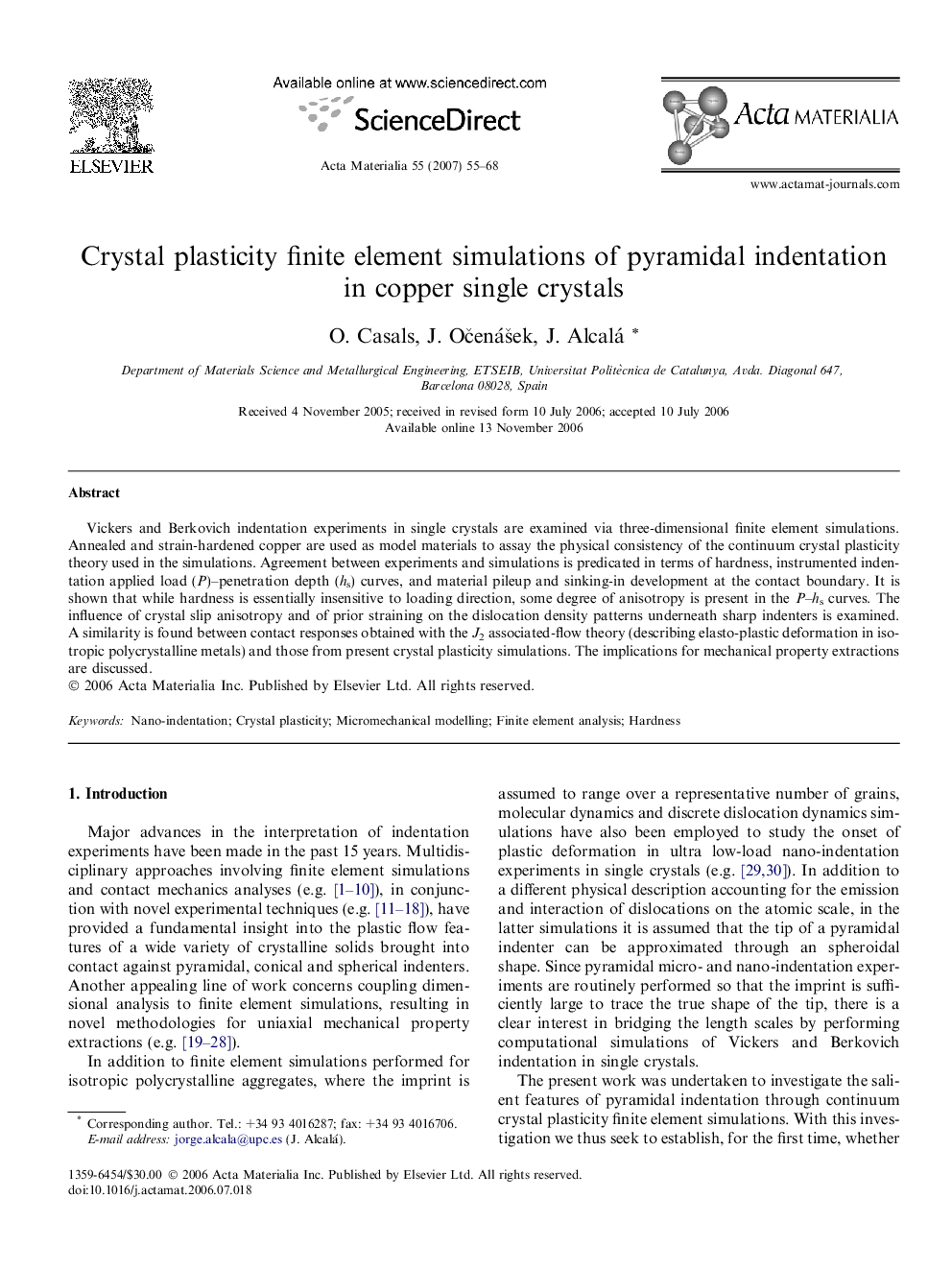| Article ID | Journal | Published Year | Pages | File Type |
|---|---|---|---|---|
| 1449889 | Acta Materialia | 2007 | 14 Pages |
Vickers and Berkovich indentation experiments in single crystals are examined via three-dimensional finite element simulations. Annealed and strain-hardened copper are used as model materials to assay the physical consistency of the continuum crystal plasticity theory used in the simulations. Agreement between experiments and simulations is predicated in terms of hardness, instrumented indentation applied load (P)–penetration depth (hs) curves, and material pileup and sinking-in development at the contact boundary. It is shown that while hardness is essentially insensitive to loading direction, some degree of anisotropy is present in the P–hs curves. The influence of crystal slip anisotropy and of prior straining on the dislocation density patterns underneath sharp indenters is examined. A similarity is found between contact responses obtained with the J2 associated-flow theory (describing elasto-plastic deformation in isotropic polycrystalline metals) and those from present crystal plasticity simulations. The implications for mechanical property extractions are discussed.
